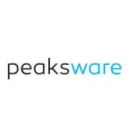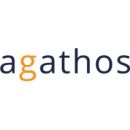In 2000, Marc Randolph and Reed Hastings, then co-founders of a little DVD-by-mail service known as Netflix, met with John Antioco, CEO of Blockbuster. Buy Netflix for $50 million — that was the offer. Antioco declined. Actually struggled not to laugh, as Randolph remembers it.
While far from a booming business at the time, Netflix’s leaders were ahead of the trend that was pulling away from the physical movie rental experience and toward digital — even if internet speeds were not yet fast enough for on-demand downloads.
Today, only one Blockbuster video rental location exists. It’s in Bend, Oregon, and it attracts tourists seeking early-2000s nostalgia. Of course, it’s not enough to bring back the brick-and-mortar movie rental business. While there were many factors behind Blockbuster’s fall, it’s clear the company ignored the dot-com trend at its peril. Blockbuster failed to innovate and was left behind in the physical world.
Netflix, on the other hand, embraced early tech trends to evolve into the streaming platform it is today, leveraging user data to offer personally curated titles ideal for endless binge-watching.
Trends in technology and data science emerge quickly, and keeping abreast of these shifts and evolutions should be a priority for every tech professional. Those who are able to identify promising ideas quickly, help their teams innovate and lead the pack in pursuing an industry trend are better able to secure their company’s future. That’s why Built In Colorado sat down with three data scientists to learn about the tech trends they’re keeping a close eye on right now and the impacts these innovations might have for the future.

DISQO powers a customer experience platform that gives brands insights into all stages of the customer journey.
What’s one data science trend you’re watching right now?
In 2005, the book Freakonomics, by Stephen J. Dubner and Steven Levitt, captivated people by using simple examples to articulate the differences between causation and correlation. In 2021, the Royal Swedish Academy of Sciences awarded the Nobel Prize in Economic Sciences to Joshua D. Angrist and Guido W. Imbens “for their methodological contributions to the analysis of causal relationships.”
The foundation of this work revolves around causal inference. Causal inference refers to the process of drawing a conclusion that a specific treatment — for example, exposure to an advertising message — was the cause of the outcome observed. I’m watching and applying this work because it’s important for what we do at DISQO — to better understand the brand-lift effects of advertising campaigns.
What influence will this trend have on your work?
Causal inference and counterfactual reasoning are the two core philosophies around which we built DISQO’s ad measurement product. Counterfactual reasoning is a concept in psychology that answers the question, “If someone had been exposed to a treatment, what would the outcome have been?”
Questions we might ask based on this concept are, “Was an action that people took caused by being exposed to an ad?” and “Are people who were exposed to an ad more likely to perform an action than people who were not exposed to an ad?”
We look at the outcome for those treated — those who were exposed to the ad — but we need to estimate the missing portion. In other words, we need to estimate what would have happened with the control people — those who were not exposed to the ad — if the treatment had been applied to them. In a nutshell, our goal is to calculate the average treatment effect.
Causal inference and counterfactual reasoning are the two core philosophies around which we built DISQO’s ad measurement product.”
How are you getting ahead of this trend?
While there are different ways to identify the counterfactuals, we invest in propensity models as our primary vehicle for creating control groups. Propensity models and scores are a core component of our insights and customer understanding platform, especially as we try to formulate important concepts such as brand and category intenders, which helps our clients understand what their potential customers plan to do.
Using propensity scores and normalization, we’re able to understand which brands a user finds most important, what level of brand propensity they might have and how prior brand propensity affects brand-lift campaigns.
Peaksware develops software that helps coaches and instructors fine-tune athletic and musical performance.
What’s one data science trend you’re watching right now?
The adoption and general acceptance of easy-to-set-up machine learning services from AWS and other players is a trend I’m following. The expectation around high-quality data products is maturing across a wide range of industries, not just the historically data-hungry world of tech. Data is being viewed less as a way to reactively report on the past and more as a way to identify and prescribe opportunities in the future.
These concepts aren’t new, but as more companies see the value of deeper dives into their data, these AI and ML services offer quicker results and greatly reduced barriers to entry into the predictive space.
What influence will this trend have on your industry?
My initial gut reaction — and what I imagine is likely a natural first reaction for a lot of data professionals already building and tuning their own models — was to distrust these services. While I do think it’s healthy to distrust new tools until they’re proven useful, I also see a resource-saving balance being struck.
We will need to have a pragmatic mindset to determine when these off-the-shelf solutions are well-suited for the task at hand and when a more bespoke approach is warranted. This requires folks who work in data to not only have a grasp of the “how” when working with predictions, but also become knowledge experts with a deep understanding of the “why.”
Voegtline’s tips for getting ahead of the ML services trend:
- Become the data liaison for stakeholders who are eager to incorporate these new tools and communicate what can be accomplished given the state of the organization’s data.
- Develop the ability to explain the model to a nontechnical audience.
- Push for increased organization-wide data literacy.

Agathos is a healthtech company that helps physicians maximize impact with actionable data.
What data science trends are you watching right now?
In terms of the day-to-day work of data scientists, I’m seeing two trends. First is the need for tools to enable remote collaboration for teams. Many data scientists don’t want to return to the office — and a lot of them don’t have to, as many companies are responding with fully remote work options. Tools such as Miro and Zoom allow us to collaborate synchronously and asynchronously. Secondly, the role of the data scientist has traditionally had a vague description and required a wide toolkit. However, there’s a slow trend toward specializing and creating narrower definitions.
A trend related to healthtech is an evolution from widespread, cheap genetic sequencing to personalized medicine and the use of genetic information to inform public health trends and trace outbreaks in epidemiology.
There’s a transition away from data scientists owning everything and toward bringing on more specialized data engineers and data analysts.”
What influences will these trends have on your industry?
Changing the underpinnings of our internal work models to support long-term remote environments, we’ll likely move away from unsupported software packages to those that enable ongoing collaboration. In regard to specialization in the data science field, we’re seeing this most in large companies. But even at Agathos, there’s a transition away from data scientists owning everything data-related and toward bringing on more specialized data engineers and data analysts.
The impact of the healthtech trend is the ability to simulate hospital data and predict, based on limited information, the behaviors of healthcare providers and patients.









